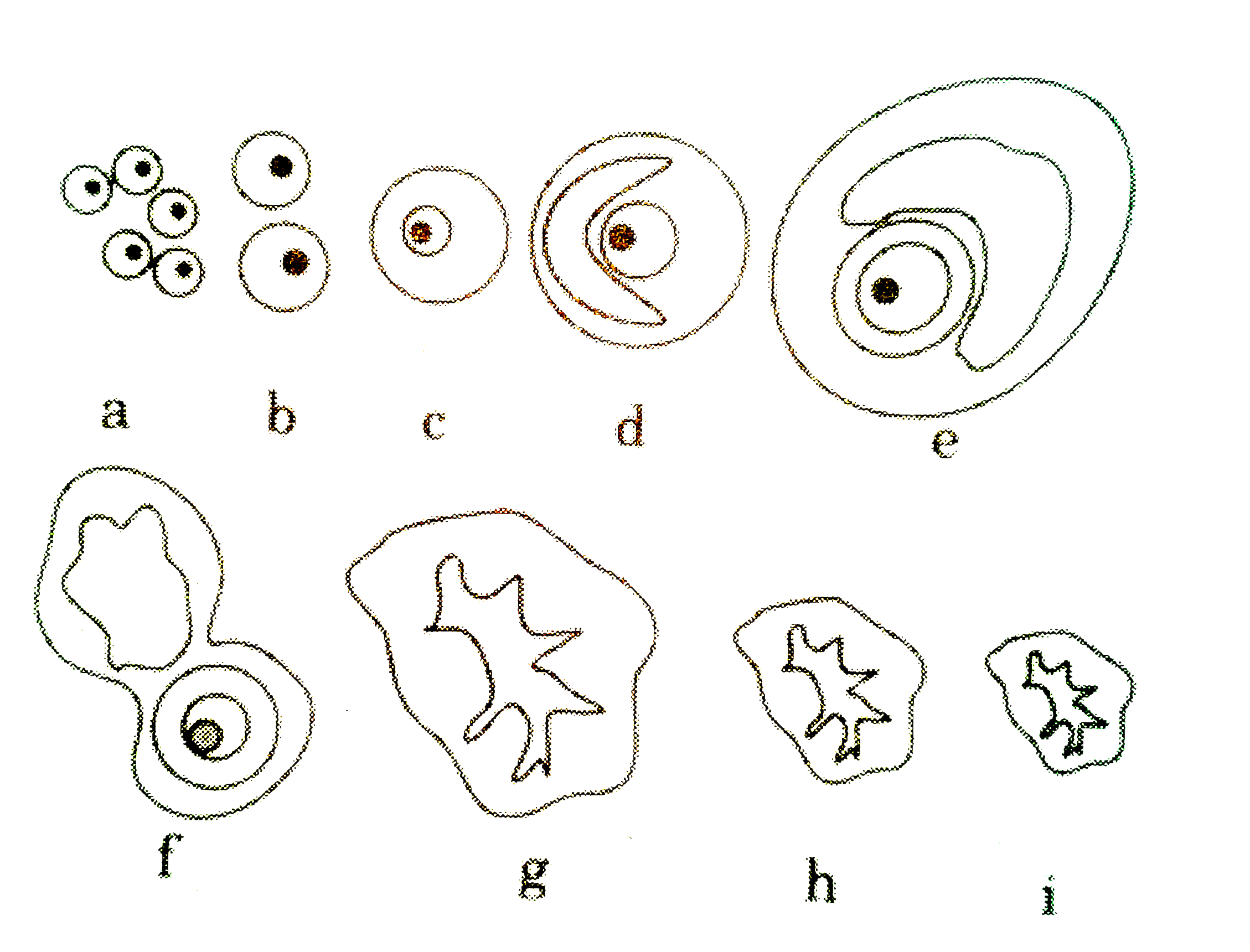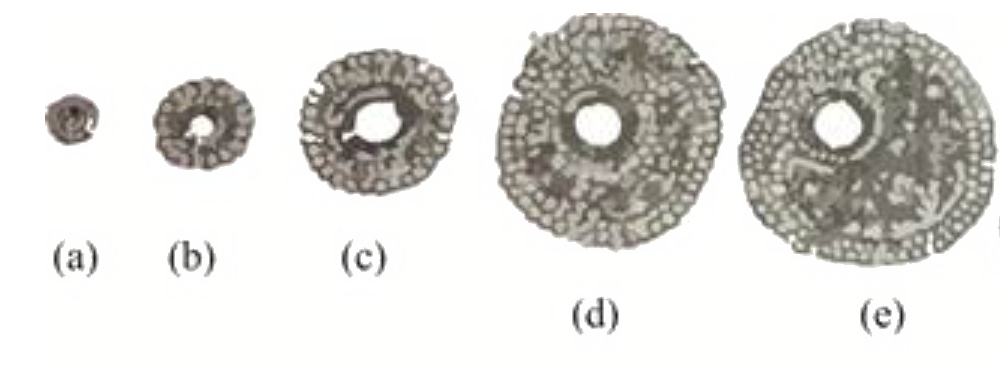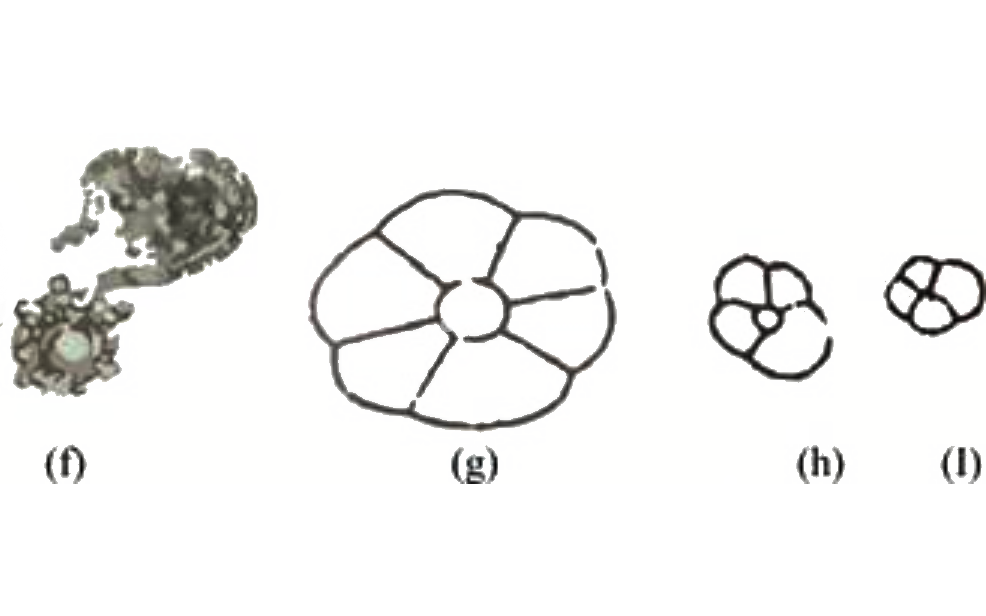The following is the illustration of the sequence of ovarian events (A - l) in a human female.

Write the - difference between C and H.
C is the developing stage of follicle.
H is the developed corpus luteum.
Topper's Solved these Questions
- HUMAN REPRODUCTION BOOK - PREMIERS PUBLISHERSCHAPTER - HUMAN REPRODUCTION EXERCISE - OTHER IMPORTANT QUESTIONS & ANSWERS (Choose the correct answer)
27 Videos
- HUMAN REPRODUCTION BOOK - PREMIERS PUBLISHERSCHAPTER - HUMAN REPRODUCTION EXERCISE - OTHER IMPORTANT QUESTIONS & ANSWERS ( Answer the following)
37 Videos
- HUMAN HEALTH AND DISEASESBOOK - PREMIERS PUBLISHERSCHAPTER - HUMAN HEALTH AND DISEASESEXERCISE - OTHER IMPORTANT QUESTIONS AND ANSWERS (ANSWER THE FOLLOWING)
28 Videos
- MICROBES IN HUMAN WELFARE BOOK - PREMIERS PUBLISHERSCHAPTER - MICROBES IN HUMAN WELFARE EXERCISE - OTHER IMPORTANT QUESTIONS & ANSWERS (ANSWER THE FOLLOWING)
19 Videos
Similar Questions
The following is the illustration of the sequence of ovarian events (a - 1) in a human female. (a) Identify the figure that illustrates ovulation and mention the stage of oogenesis it represents.
(b) Name the pituitary hormone that has caused the above mentioned event.
(c) Explain the changes that occur in the uterus simultaneously in anticipation
(d) Write the differences between 'c and 'h'.
(e ) Draw a labelled sketch of the structure of a human ovum prior to fertilization.

View SolutionThe following is the illustration of the sequence of ovarian events (a - 1) in a human female. (a) Identify the figure that illustrates ovulation and mention the stage of oogenesis it represents.
(b) Name the pituitary hormone that has caused the above mentioned event.
(c) Explain the changes that occur in the uterus simultaneously in anticipation
(d) Write the differences between 'c and 'h'.
(e ) Draw a labelled sketch of the structure of a human ovum prior to fertilization.

View SolutionThe following is the illustration of the sequence of ovarian events (a - i) in human female.

(i) Identify the figure that illustrates ovulation and mention the stage of oogenesis it represents.
(ii) Name the ovarian hormone and the pituitary hormone that have caused the above mentioned event.
(iii) Explain the changes that occur in the uterus simultaneously in anticipation.
(iv) Write the difference between 'c' and 'h'
(v) Draw a labelled sketch of the structure of a human ovum prior to fertilization.
View SolutionThe following is the illustration of the sequence of ovarian events "a" to "I" in a human female :


Identify developing follicle, mature follicles and corpus luteum.
View SolutionThe following is the illustration of the sequence of ovarian events "a"
to "I" in a human female :


Identify developing follicle, mature follicles and corpus luteum.
View SolutionThe following is the illustration of the sequence of ovarian events ''a'' to ''I'' in a human female :

(a) Identify the figure that illustrates corpus luteum and name the pituitary hormone that inhuences its formation.
(b) Specify the endocrine function of corpus luteum. How does it influence the uterus? Why is it essential?
(c) What is the difference between “d” and “e”?
(d) Draw a neat labelled sketch of Graafian follicle.
View SolutionThe following is the illustration of the sequence of ovarian events ''a'' to ''I'' in a human female :

(a) Identify the figure that illustrates corpus luteum and name the pituitar) hormone that inhuences its formation.
(b) Specify the endocrine function of corpus luteum. How does it influence the uterus? Why is it essential?
(c) What is the difference between “d” and “e”?
(d) Draw a neat labelled sketch of Graafian follicle.
View SolutionThe following is the illustration of the sequence of ovarian events (a - i) in human female.

(i) Identify the figure that illustrates ovulation and mention the stage of oogenesis it represents.
(ii) Name the ovarian hormone and the pituitary hormone that have caused the above mentioned event.
(iii) Explain the changes that occur in the uterus simultaneously in anticipation.
(iv) Write the difference between 'c' and 'h'
(v) Draw a labelled sketch of the structure of a human ovum prior to fertilization.
View SolutionThe following is the illustration of the sequence of ovarian events (a - i) in human female.

(i) Identify the figure that illustrates ovulation and mention the stage of oogenesis it represents.
(ii) Name the ovarian hormone and the pituitary hormone that have caused the above mentioned event.
(iii) Explain the changes that occur in the uterus simultaneously in anticipation.
(iv) Write the difference between 'c' and 'h'
(v) Draw a labelled sketch of the structure of a human ovum prior to fertilization.
View SolutionSelect the correct sequence of reproduction events in humans
View Solution
